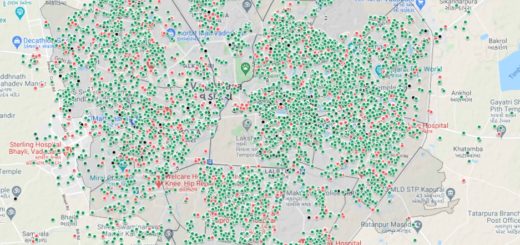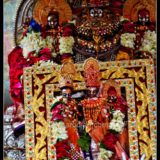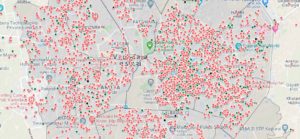Petition to stop construction in front of historic Pratap Vilas Palace, Vadodara
The story of Pratap Vilas Palace

Amidst 55 acres of pristine greenery and quietude, Maharaja Sayajirao III planned a private residence for his young son Lt Col. Yuvraj Fatesinghrao Gaekwad and his wife Yuvrani Padmavatidevi. No one knew better than the Maharaja the privilege of privacy, himself losing it on being crowned king in his boyhood.
And so the foundation was laid by Baroda Diwan, Kershasp Rustamjee Dadachanjee and on 15 February 1908 began the creation of a ‘Prince’s Palace’ under British architect Charles F. Stevens. Charles was the son of F.W. Stevens, the man who created Mumbai’s iconic Victoria Terminus. Charles had earlier completed Mumbai’s Standard Chartered Building, left unfinished at the time of his father’s death, and later build the famous Mumbai Regal Cinema.
Shortly after construction began, prince Pratapsinhrao was born to Yuvraj Fatehsinh and Yuvranisaheb Padmavatidevi. On 14th September 1908 however, tragedy struck and the Yuvraj passed away, his son and heir, only 75 days old. A grief-stricken Maharaja Sayajirao III thereafter named the palace Pratap Vilas after his grandson.
Sayajirao III was not unfamiliar with such cruel coincidences. His own beloved first wife, Maharani Chimnabai I had passed away while Lukshmi Vilas Palace was underway.
On 30th July 1914, at the cost of Rs 8,00,000, the palace reached completion. Built-in Renaissance and Baroque style the palace is lined with Italian marble and the facade flaunts a dome entirely clad with copper. Interestingly the kitchen was attached to the palace through a tunnel so as to prevent any attempts at poisoning the royal family!
Padmavati Devi moved into the palace with her three children, Prince Pratapsinhrao and his two sisters Princesses Indumatidevi and Lukshmidevi. However, it took another four years to finish furnishing the palace, perhaps due to the outbreak of World War I (1914-1918). In 1919 sadly, Padmavatidevi passed away and the children were orphaned.
Over time this palace came to be home of the next generation of royal newlyweds, Yuvraj Pratapsinhrao and his young bride Yuvranisaheb Shantadevi. It was here that their children Yuvraj Fatesinhrao and princesses Mrunalinidevi, Sarlaraje, Pramilaraje, and Vasundhararaje were all born.
On 7th February 1939, it was from its balcony that the name of Pratapsinhrao Gaekwad was announced as the 14th king of Baroda State. Post-independence in 1952, Pratap Vilas was leased to the Union Ministry of Railways along with its surrounding land. In 1961 the Railway Ministry purchased the estate for Rs 24,38,271.

Today the palace houses the only Railway University of India, known as ‘The National Academy of Indian Railways’ or ‘Bharatiya Rail Rashtriya Akademy’.
Sincere Appeal
Disturbingly for the city of Vadodara and it’s Royal Family, a decision has been taken to construct a multi-storey building in the historic Raja Baug or the palace garden overlooking the Pratap Vilas Palace. This is to accommodate the National Rail and Transportation Institute and other offices. The markings on the ground have begun but construction is yet to start. This move will certainly destroy the beauty and history of this landmark of Vadodara. The Royal Family of Vadodara and Maharaja Fatesingh Museum appeal to all citizens of the city to stand up against this decision.
Royal Family of Vadodara and Maharaja Fatesingh Museum Trust
Partial Information and photographs are provided by Mr. Gaurav Krishna Bansal, IRTS SPCM/NAIR & Mr. S K Verma, PS to Director-General
to Sign the petition Click Here
Author: Radhikaraje Gaekwad
For Maharaja Fatesingh Museum Trust & LVP Documentation
30.07.20















